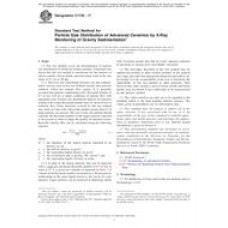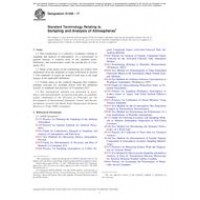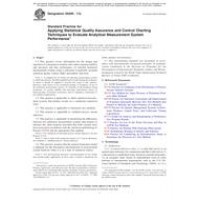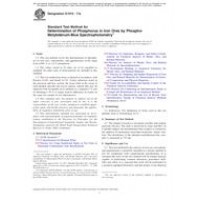ASTM C1730-17
- Standard Test Method for Particle Size Distribution of Advanced Ceramics by X-Ray Monitoring of Gravity Sedimentation
- standard by ASTM International, 07/01/2017
- Category: ASTM
$42.00
$21.00
1.1 This test method covers the determination of particle size distribution of advanced ceramic powders. Experience has shown that this test method is satisfactory for the analysis of silicon carbide, silicon nitride, and zirconium oxide in the size range of 0.1 up to 50 µm.
1.1.1 However, the relationship between size and sedimentation velocity used in this test method assumes that particles sediment within the laminar flow regime. It is generally accepted that particles sedimenting with a Reynolds number of 0.3 or less will do so under conditions of laminar flow with negligible error. Particle size distribution analysis for particles settling with a larger Reynolds number may be incorrect due to turbulent flow. Some materials covered by this test method may settle in water with a Reynolds number greater than 0.3 if large particles are present. The user of this test method should calculate the Reynolds number of the largest particle expected to be present in order to judge the quality of obtained results. Reynolds number (Re) can be calculated using the following equation:

| where: | ||
| D | = | the diameter of the largest particle expected to be present, in cm, |
| ρ | = | the particle density, in g/cm³, |
| ρ0 | = | the suspending liquid density, in g/cm³, |
| g | = | the acceleration due to gravity, 981 cm/sec², and |
| η | = | the suspending liquid viscosity, in poise. |
 PDF
PDF
All of our standards document are available in PDF (Portable Document Format), an electronic, downloadable format.You will be able to download the file in your account downloads.
 Multi-User Access
Multi-User Access
After purchasing, you have the ability to assign each license to a specific user.
 Printable
Printable
At any time, you are permitted to make printed copies for your and your members' reference use.
ASTM D3612-02(2017)
Standard Test Method for Analysis of Gases Dissolved in Electrical Insulating Oil by Gas Chromatogra..
$35.00 $69.00
ASTM D6299-17a
Standard Practice for Applying Statistical Quality Assurance and Control Charting Techniques to Eval..
$42.00 $83.00
ASTM E1070-17a
Standard Test Method for Determination of Phosphorus in Iron Ores by Phospho-Molybdenum-Blue Spectro..
$21.00 $42.00





